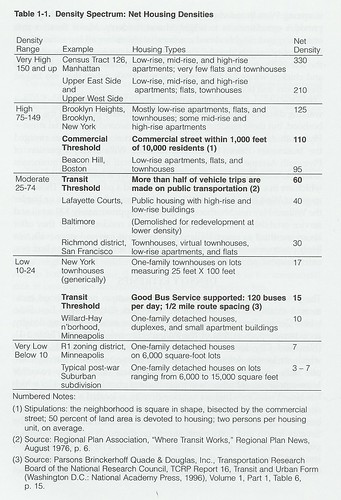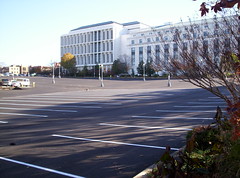A federal offense
(A U.S. Senate side parking lot, located between 1st and 2nd Streets NE.)
I don't have it in me to write up some assessment of last year, or speculation for this year. Just Up the Pike did a nice job in this blog entry about Montgomery County, "in and out for moco: 2008 edition."
But an email discussion about the dropping of provisions in the energy bill that support bicycling, because in the words of Doc Hastings (R-WA):
And, Mr. Speaker, it gives a tax credit to people for riding their bikes to work. I am sorry, but gas prices and climate change aren't going to be fixed by making people ride their bikes to work. This isn't a plan to make America energy independent and to free us from foreign oil. It is just a dream for the political left in this country. And let me repeat, Mr. Speaker, it raises taxes, it is anti-nuclear and anti-dams, it forces people out of their cars, and gives tax credits for riding their bike to work.
Inspires me a bit and I wrote this (edited):
The four most important changes in these kinds of policies would be:
1. Banning free parking generally, and providing employer or pre-tax benefits for parking.
2. Increasing the gasoline excise tax, indexing it, and making sure it takes into account VMT.
3. Location efficient mortage.
As long as transit is relatively inefficient, most people will drive. For a good example of this, see "Once I took the railroad: Why nobody, but nobody will ever take mass transit as long as they have a choice." from the Los Angeles Times.
(He should bike by the way. Or bike to the light rail. Etc. There are ways that his trip could be improved without having to drive.)
In DC and Arlington, and in certain other places in the region, it is more efficient and cost effective to travel in different ways other than driving. If parking wasn't subsidized, this would be the case for even more people. But after a certain point, there is an imbalance between jobs, housing, and mobility infrastructure, which would need the most important change to be reconciled:
4. Accessibility planning. Rate all uses for demand for mobility infrastructure. Rate all places for access to transit/mobility infrastructure. Only allow uses to locate in places where infrastructure needs are met in optimal publicly-supportive ways.
cf for an opposite experience -- BRAC facility relocations to Ft. Belvoir in VA and to locations in Anne Arundel County, in areas unconnected, for the most part, by adequate transit, and located much further by way of comparison to the more locationally accessible places the facilities are currently located in.
A wee bit of money for bike commuters is just designed to make us feel good. It has little impact.
The real issue is cost and time efficiency of alternatives. In a compactly developed area, transit is efficient. But it requires decent densities.

And to complement the densities, a well designed and connected transit system, with a decent amount of station density and multiple lines is required, in order that transit overall be a more efficient and effective way to get around AFTER walking and bicycling.

Many bicyclists need to learn how to park their bikes in ways that don't negatively impact other bicyclists... (I left a note for the rider of the pink bike...)




0 Comments:
Post a Comment
<< Home